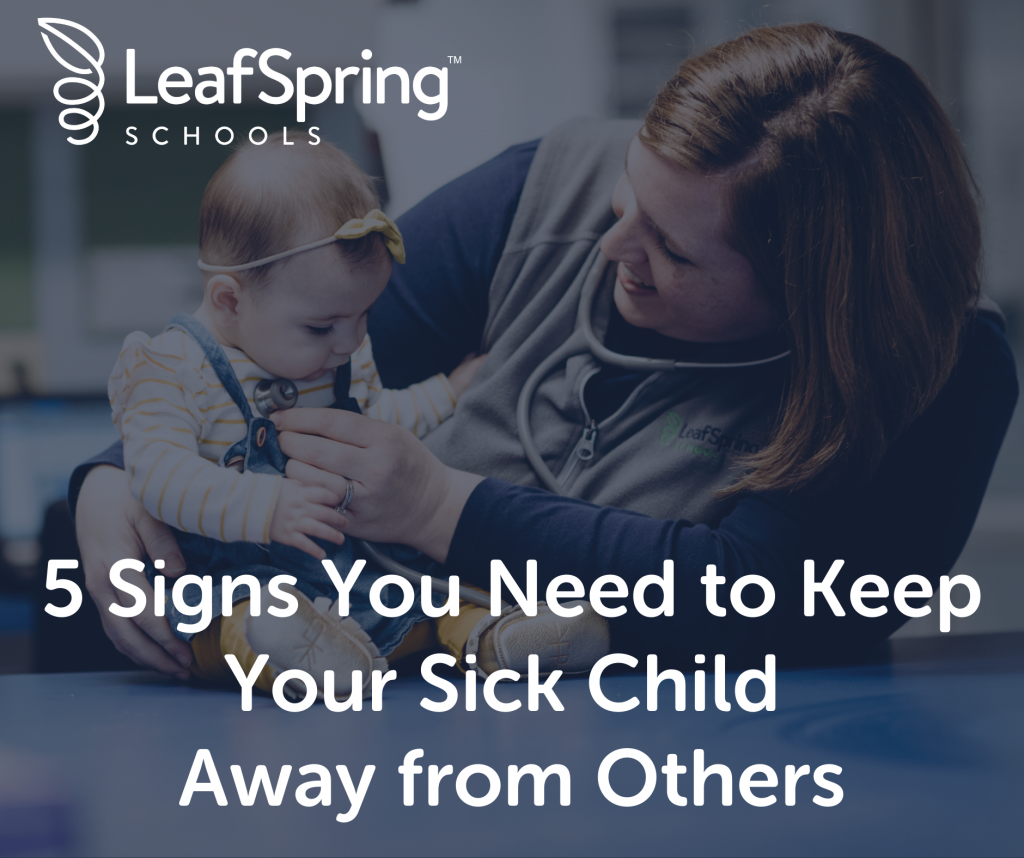This is the obvious one, but also one that is easily confused due to the awesome power of fever-reducing medicines. If your child has a temperature of 100.4 or greater, then he has a fever. When fever strikes, it’s often difficult to know the exact cause right away, so it should always be assumed the child is contagious. Using fever reducers like Tylenol and Motrin is fine to keep your child comfortable during an illness, but it’s important to know that while the medication brings the temperature down, it does not stop the disease or virus from spreading.
When is it okay to return to school or other activities? When your child has been fever-free for twenty-four hours without the use of any fever-reducing medications.
2. Vomiting and/or Diarrhea
Upset tummies happen all the time. One episode of vomit or diarrhea doesn’t necessarily mean your child is ill or contagious. Two episodes in one day, though, means there is likely something more going on, and it’s time to stay home (and near the bathroom). Most gastrointestinal illnesses are easily spread from person to person. And it’s also no fun (for adults or children) to clean up vomit or have potty accidents at school, camp, or at a party. So when it comes to vomiting and/or diarrhea: Two strikes means it’s time to stay home.
When is it okay to return to school or other activities? When your child has been free of vomiting or diarrhea for at least twenty-four hours, and she is able to tolerate food again.
3. Unexplained Rash/Pink Eye
Rashes can be tricky and are very often benign, but this is also an important time to err on the side of caution since there are so many potential causes. If you are unable to identify with certainty what the rash is (eczema, hives, etc.), then you’ll need to make a quick trip to your pediatrician to find out if it is contagious or not. Many rashes accompany a viral illness (such as hand, foot, and mouth disease), while others may require medication to treat (impetigo or staph). Additionally, symptoms of pink eye (red, itchy, goopy, swollen eyes) will also need your pediatrician’s evaluation before your child can be around other children.
When is it okay to return to school or other activities? If your pediatrician gives you the green light to be among peers, go for it. But if the rash/eye requires any kind of antibiotic treatment or is accompanied by fever, follow the 24-hour rule and be sure that twenty-four hours has passed since antibiotics were started.
4. Any of the Creepy Crawlies
They’re gross to think about, but creepy-crawly critters happen and are normal – especially with kids. If your kids have head lice, scabies, or bed bugs, they need to stay away from others and be treated (or in the case of bedbugs, their clothes, backpacks, etc., need to be treated). While these three types of critters are vastly different, they all have two things in common: They cause itching and they spread easily. If you suspect your child may be infested, seek treatment and follow all instructions for keeping the spread of the bugs at bay.
When is it okay to return to school or other activities? When your child (and your home/family) has been fully treated and is free of creepy crawlies.
5. Strong Suspicion of an Illness on the Way
Parents know their children so well that there are times when they can just look at them and know something is off – even when they aren’t presenting any concrete signs of illness. If your child is out of sorts, not able to keep up with her normal routine, exhausted, not eating, or generally miserable, and you just know something is coming, you’re probably right. Do other families a favor and keep your kiddos away from their healthy friends until you know for sure they are well.
As you prepare to send your children off to school, social events, or camp, remember to keep these five signs in mind so that the only thing your child is spreading is his charming personality. Oh, and by the way, all these rules apply to adults as well. Take care of yourself!

